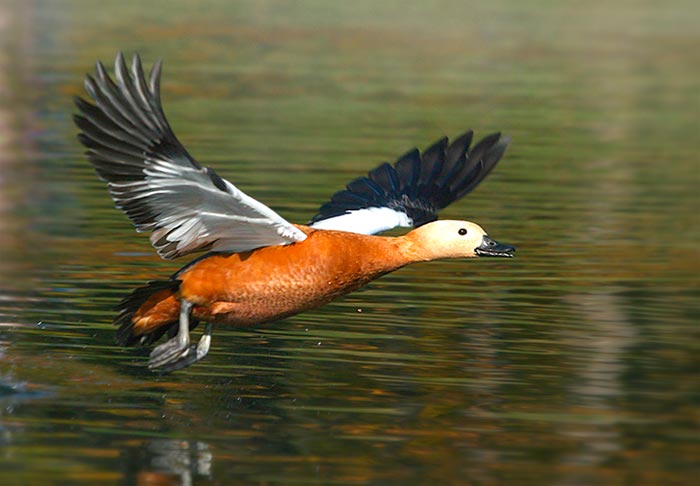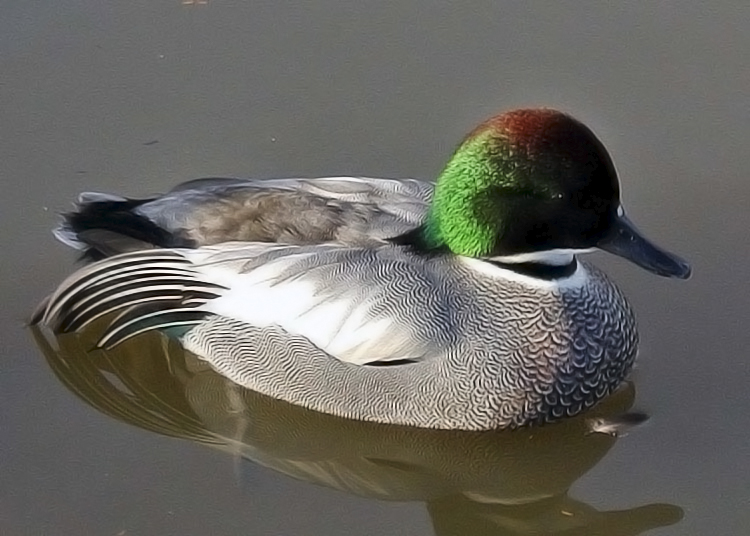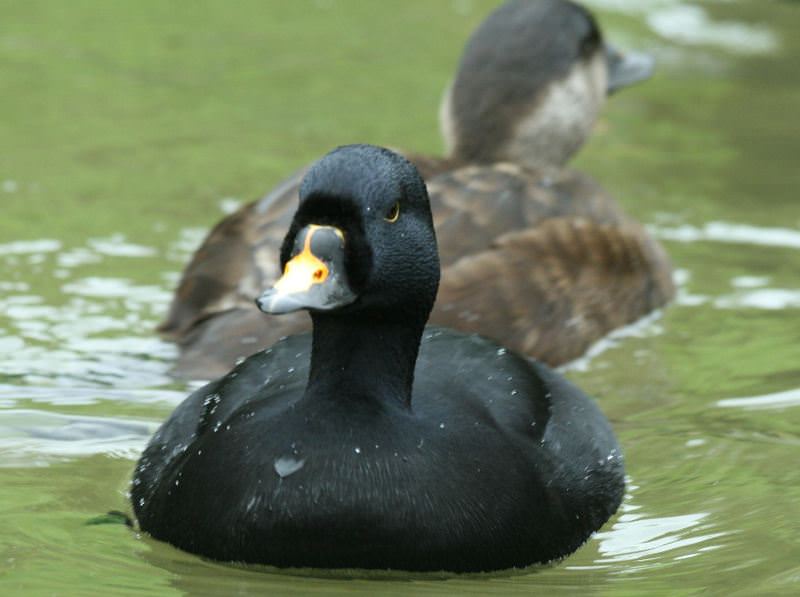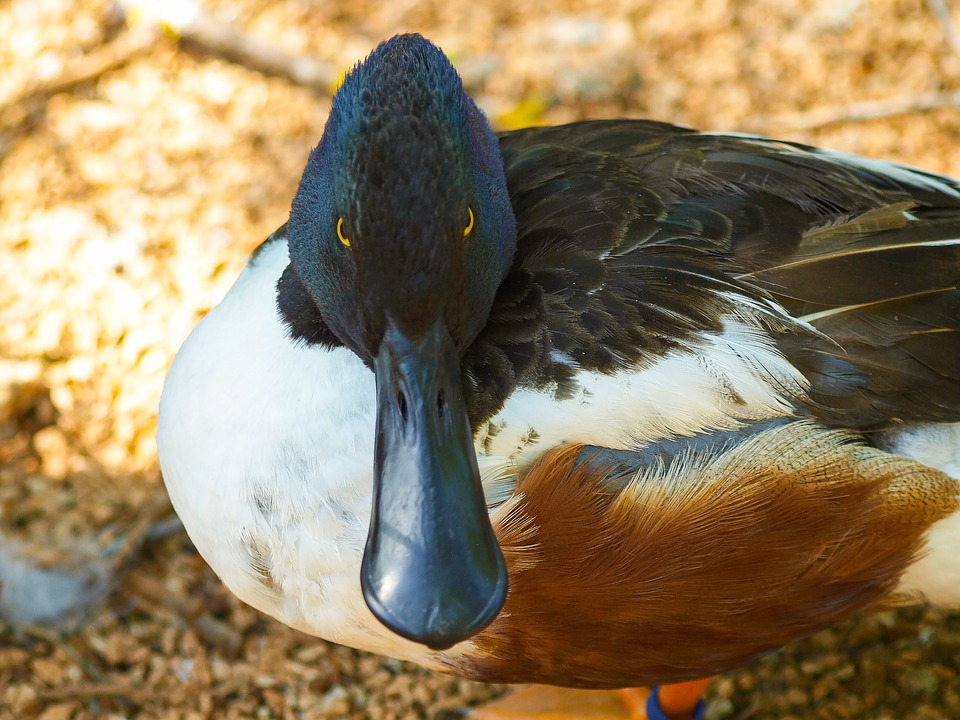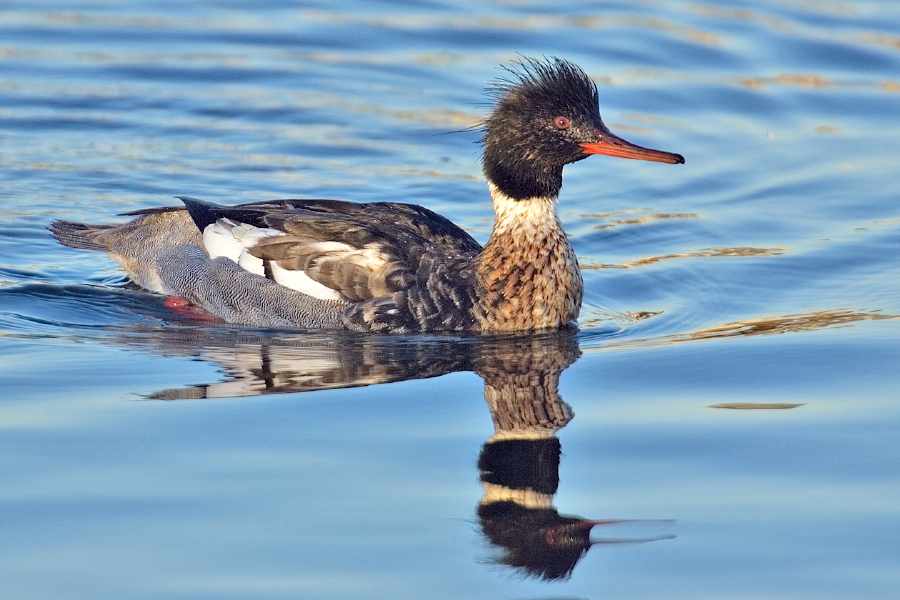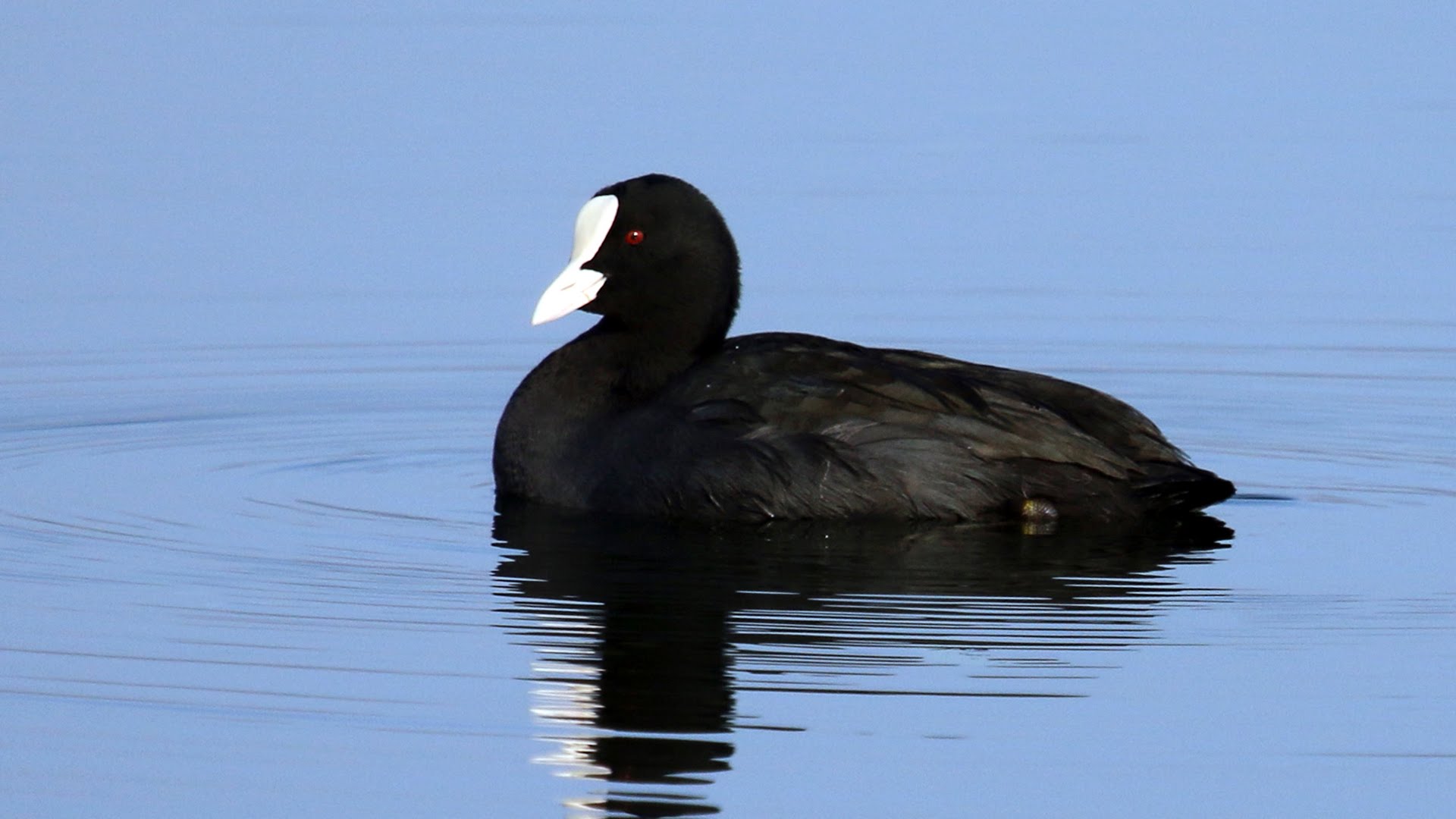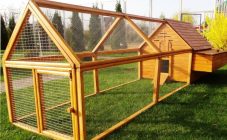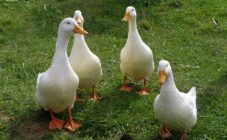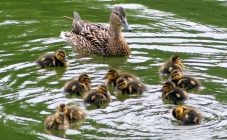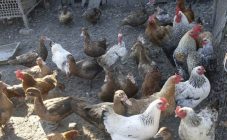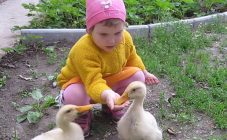Content:
The wild duck is one of the most common and familiar birds inhabiting water bodies. A favorite game for hunters, it is appreciated for its large numbers, an exciting hunting process and a good taste of meat.
Despite the diversity of species and the large number of individuals, the number of the population is constantly decreasing, and some bird breeds are already included in the Red Book. This tendency is facilitated by the actions of poachers and the drying of reservoirs.
On the territory of Russia, there are 31 species, mainly river and diving varieties.
Famous species of wild ducks
Duck breeds are found in all regions of Russia. The most common ones are:
- Sviyaz (Sviyaga, Whistler). Habitat - northern regions of Russia, Siberia. Known for its characteristic whistle, especially during the mating season.
The drake is ash gray, with dark stripes, yellow head, light brown neck, dark gray paws and beak. The mirror is dark green. The duck stands out with a snow-white tummy. The color of the back and wings is dark brown, the edges of the feathers are white. A distinctive feature of this type of duck is a short beak. It is appreciated for its good quality meat.
- Killer Whale (Orchard Drake). The famous northern duck. It is found only in the eastern regions, very cautious. Hunting for killer whales requires a lot of patience and certain skills. A beautiful breed.
The drake is light gray with dark stripes on the back, a pure white chin, and a black tail. Paws are dark gray, beak is brown-black. Brown duck with black spots.
- Teal... The smallest and fastest in flight breeds of wild ducks.
There are 4 types:
- Teal whistle (chiren, small teal). Found in all regions of the country. Drakes are light gray with a white stripe on the back and a yellowish brown spot near the tail. Females are dark gray with a spot on the forehead.
- Teal cracker (chirek large, scab, snorer)... The name of the ducks corresponds to a crackling grunt. Males are gray-gray, with a long light stripe along the back. Females are gray.
Whistle and crackling live almost throughout the country.
- Teal Klokotun (gaganok, moklok)... The largest of the chirik duck. Found in Eastern Siberia and the Far East. The drake of this breed is elegant - an ash-gray back, blue sides, a green mirror.
- Teal marble (narrow-nosed)... It inhabits the southern regions, without going beyond the borders of the Lower Volga region. The male does not change plumage, remains the same as the female - light gray with smooth tints, reminiscent of marble.
- Crested duck (nigella, herbalist, white-sided)... Nest in the Trans-Urals, Western Siberia, Trans-Volga. A large variety of duck. The plumage is restrained - the wings and back are coal-black, the belly is white. The paws are dark, the beak is bluish. The drake has a small crest on its head. It feeds on animal food, nests in the neighborhood of humans.
- Sea duck (plesovka)... Representative of the north, mainly Tundra. Slightly more crested ducks. The chest and head are black, the belly is white, the back is grayish. The female has blotches of white feathers. It is appreciated for its high quality meat.
- Common gogol (duplenok). A variety of medium to large sized ducks. Breeds in northern regions and winters in southern regions of the country. Likes to settle in tree hollows. The duck is brown-gray.The drake's head and the edges of the porches are black, the back and abdomen are snow-white. The beak is blackish. Produces a high-pitched clear sound.
- Stone. Small wild ducks of this breed are distinguished by their bright colors. They live in Northern Siberia. The head and tail are jet black, the chest and abdomen are ashy, the sides are orange-brown. Snow-white stripes stand out on the wings and head.
- Black scooper (tulip, pig, chernukha). A representative of diving seabirds, quite large. Lives in Murmansk, Tyumen, Arkhangelsk, Siberia. The color is restrained, black and gray, with white feathers on the porches and head.
Ducks of the Moscow and Leningrad regions
Varieties of ducks near Moscow and Leningrad are characteristic of the entire central zone of Russia. The most famous and most common of them:
- Mallard (kryzhen, pitching). The most famous breed found throughout the country. It is considered the ancestor of the domestic duck. Quite large and beautiful bird, especially the drake. It is distinguished by an unusual dark green color of head feathers with a bluish tint. The beak is green, the legs are bright red. Warm countries of Africa and Asia or to the southern regions of Russia fly away for wintering.
- Gray (serushka, nerezen, half-duck). Numerical group. In terms of its habits, nutrition, and nursing of chickens, the gray-hat resembles a mallard. Even their voices are similar. The color of the birds is inconspicuous: the drake is gray with variegated stripes, the female is brown-brown. Beak and paws are yellowish. It weighs 1 kg. It lives mainly away from people. It nests on the ground, feeds on plant foods. It flies to the Caspian Sea or Transcaucasia for wintering.
- Pintail (pintail, oriental tail). Small breed. The duck has earned its name with its tail, thin, like an elongated awl. Pintail does not stand out in color - mostly gray colors of different shades. But this does not apply to the drake in the mating season. The head is dark brown, the chest and belly are snow-white, the wings are ashy. Differs in excellent taste of meat, is considered a valuable trophy.
- Shirokonoska (raptor, soksun)... The bird is medium in size. The plumage is very similar to the mallard. A distinctive feature is the disproportionately wide beak. The head is gray-black with blue tints. The chest and abdomen are brownish with white feathers, a black beak, orange paws. Get along well with domestic breeds.
Species with distinctive features
There are breeds of wild ducks with unusual differences. They are worth mentioning separately:
Merganser... Ducks with a sharp beak - elongated, hooked. There are these types of mergansers:
- Big merganser. Large bird. The color is dominated by brown-brown colors. A small crest forms on the drake's head.
- Long-nosed merganser. The bird is smaller than the large merganser. The color gamut is wide: brown, brown, gray, black. Little white crest on the head.
- Sheep (lumpy). Unlike previous breeds, these ducks are not so common in Moscow and nearby regions. But, thanks to their bright appearance, they are well remembered. The head is black with a dark blue tint, the chest, sides, back are white, the wings are brown-orange. A duck with a red beak and a characteristic bump.
- Mandarin duck (Japanese, duplivka). A very bright and beautiful small breed of ducks - an exotic group that has been domesticated in Japan and is raised as an ornamental bird. It resembles a parrot with its varied coloration. In Russia, the mandarin duck lives on Sakhalin, in the Ussuri region.
- White-eyed White-headed Duck... A duck with a blue beak. Outwardly, it differs significantly from other species of wild ducks - with a vertically protruding tail and a large head. Lives in deserts and steppes - the Caspian Sea, the Lower Volga region, the Urals.
Duck-like waterfowl are common:
- Coot - water chicken. It is easy to identify a coot by its black color, a white spot on the head, and a beak that looks more like a chicken.
- Toadstool - a waterfowl that feeds on meat. It features short legs, with the help of which it dives deeply.
Types of ducks in Moscow
In Moscow, as well as throughout central Russia, mallards, teals, ducks, large mergansers, black-and-white gogols are most often found. But the real highlight and the most efficiently growing population is the ogar breed of red ducks.
Ogar (varnavka, otika) is a large duck that moves quickly along the ground. The drake is colored orange-brown. The wings are white with black edges. The beak is black.
Ogari nest, mainly in burrows near salt lakes. Red ducks live in Siberia, in the Volga basin, Transbaikalia.
It is not known exactly how the ogars spread in Moscow. There is a version that they flew away from the zoo and took root well on the Moscow ponds.
Be that as it may, but the number of ogars in the city is constantly growing, and they are becoming an integral part of it.
Wild ducks are the most demanded game for hunters and a real gift from nature.
